In this post, I’ll share my experience of using the Fujifilm GFX100S (100S) for six months, on trips all around China and in regular everyday casual photography. I’ve split this post into sections so that you can focus on topics most important to you. I’ve also included full-size JPEG links for the images so you can download and see them in their full glory.
I was lucky to get the 100S on the official launch date and didn’t have to wait weeks or months like many are still doing today. If you want to do a comparison between how I felt about the camera when I got it versus today, six months later, please have a look at my first impressions review here.
Before I share my thoughts, the usual disclaimer. This camera was purchased at full retail price from Fujifilm China via JD.com, and I receive no compensation or benefits in writing this review; furthermore, nobody approves or reads this review before it’s published. All opinions expressed here are mine and mine alone.
Size & Weight
A big consideration when you’re thinking about moving to Digital Medium Format (DMF) has to be the size and weight of the camera system. Over the past six months, I’ve become accustomed to the 100S and don’t find it to be that big. In fact, it’s a bit narrower than my previous Fujifilm GFX50R (50R) which means that the 100S fits comfortably into places, like a Peak Design 6L sling, where the 50R was a tight squeeze.
While the camera body is very reasonable in size and even in weight, the lenses however are big beasts. I purchased the GF45-100 earlier this year and find myself rarely using it because it makes the whole setup a pain to carry around. The GF45-100 is such a stellar lens (versus any lens, let alone other zooms) that I feel guilty it stays in the drawer so much.
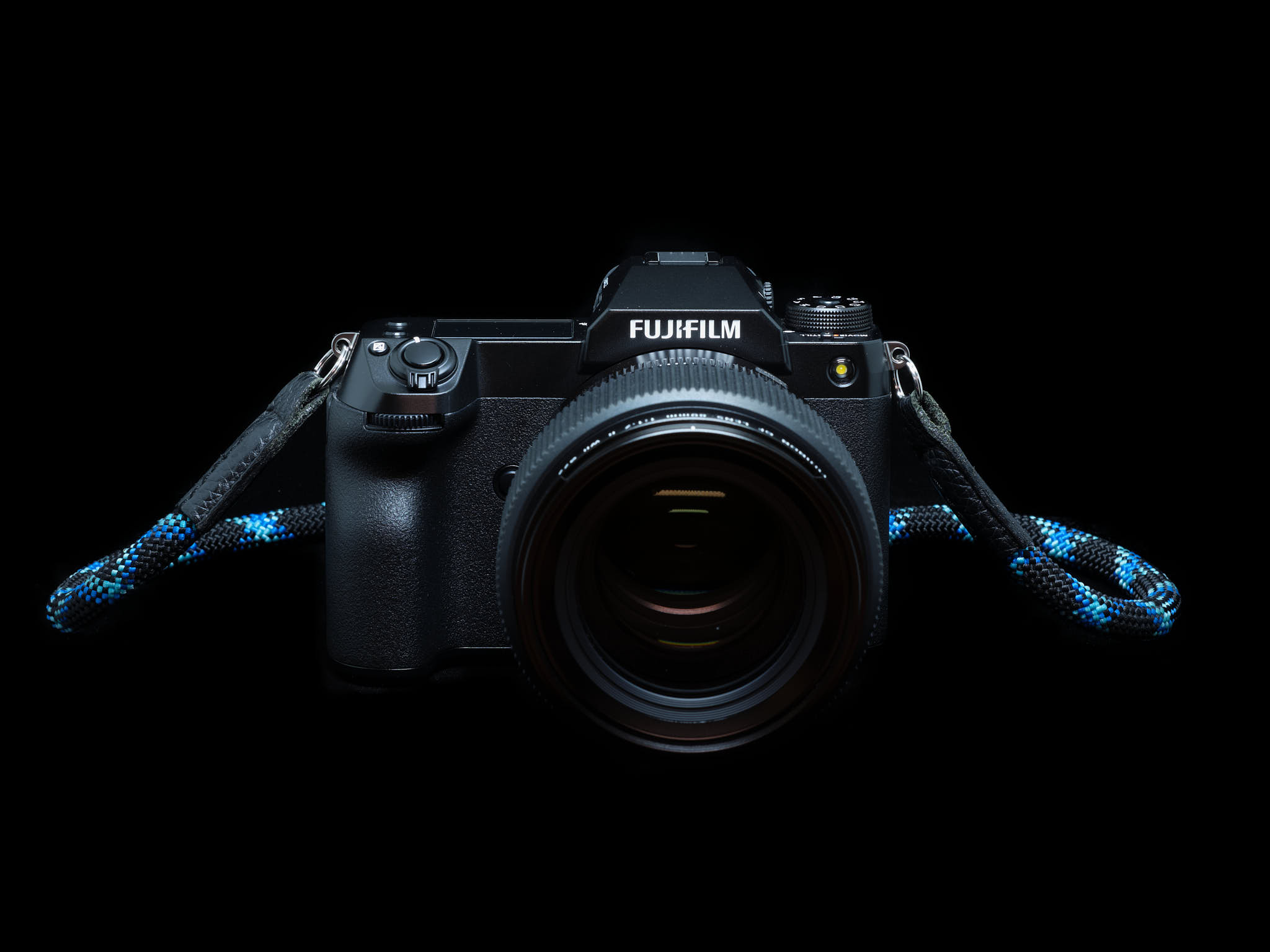
There are times when I point the 100S and lens at someone and feel that I’m being inconsiderate with this hulk of a camera/lens combination, however I had an interesting experience recently that changed my view. I had a friend take images of me using my 100S with the GF110, a pretty significant portrait lens. With the combination pointed at me, the size was nowhere near as intimidating as I thought it would be. In realty, the 100S looks like a Fujifilm X-H1 or a slightly portly X-T4.
In that same experience, I did however notice that the weight of the system is substantial, as I watched my friend’s rather weak arms shaking from trying to hold the camera and lens steady. Thankfully, the In-Body Image Stabilization (IBIS) implementation in the 100S is stellar which resulted in sharp images, even as my friend’s muscles, or lack thereof, withered under the strain of the mighty GF110.
Summary
In summary, the size and weight of the camera should be of no concern, however the size and weight of the lenses may become the big difference in your comparison with other systems. Depending on your lens choices, you may find yourself really enjoying the experience (GF45, GF50, GF63, GF80, GF32-64, and GF100-200) or potentially regretting the decision (GF45-100, GF110, and GF250) to go on the DMF journey.
Having said that, the three heavy lenses noted above bring their own joy to the experience, and that joy comes from viewing the images at 100%, 200% or even 400% zoom levels in your favourite post processing software, and seeing the incredible resolution the GF45-100, GF110, and GF250 possess. To be fair, I have to add the lightweight GF45 and GF63 to the same group as they also posses spectacular resolution, while being very small and light.
Usability
Medium Format cameras were not known for their usability. They were huge clunky beasts with slow operating systems. Hasselblad changed the game with it’s X1D in regards to size and Fujifilm changed the game again by dramatically raising the bar on usability when it introduced the 50S. Fujifilm further distanced itself from the competition with the 50R which combined small size with great usability.
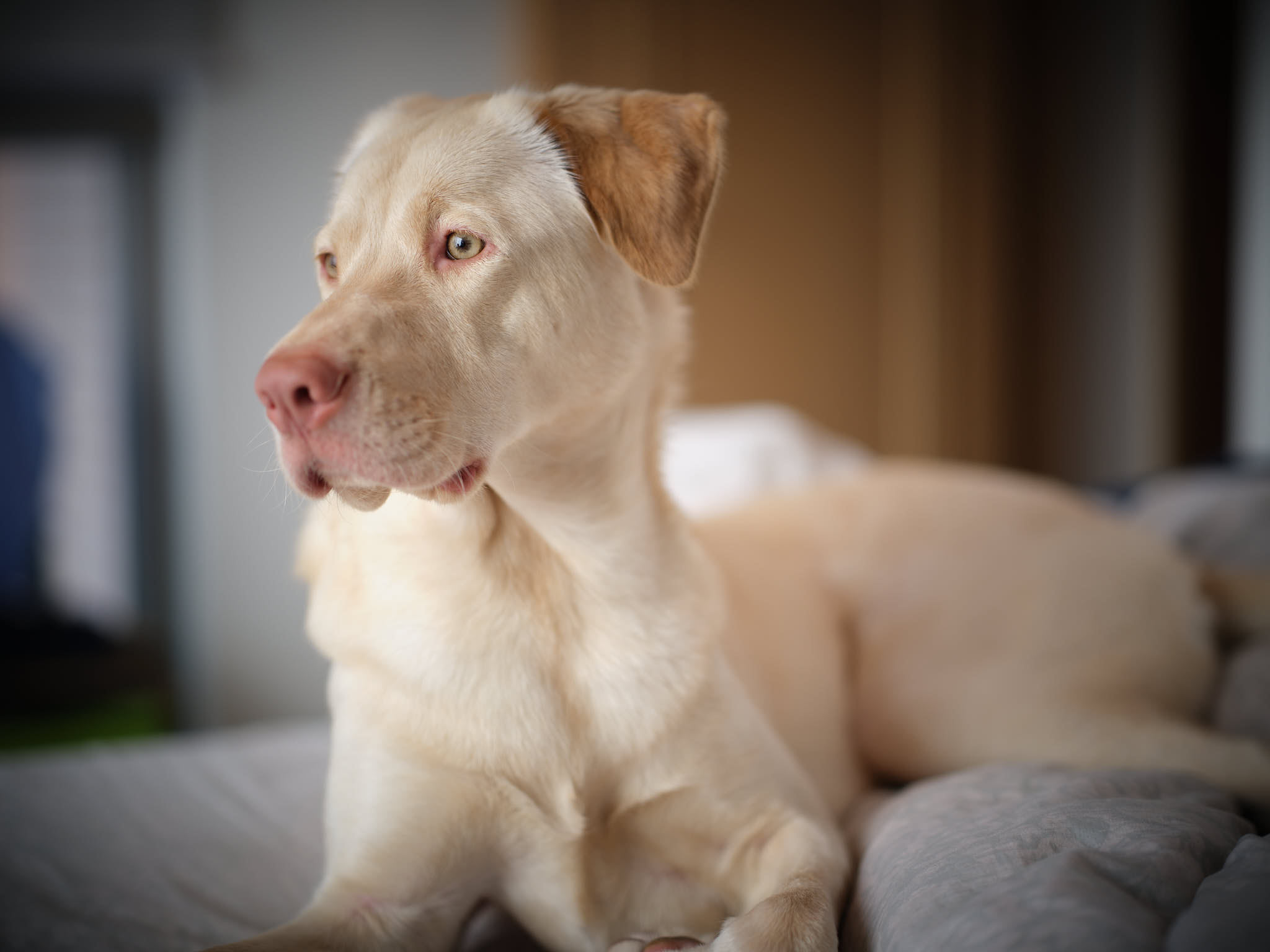
GFX100S 80mm ISO-100 1/85sec f/1.7 (Full-size 5MB JPEG) 
GFX100S 250mm ISO-1600 1/75sec f/8 (Full-size 12MB JPEG) 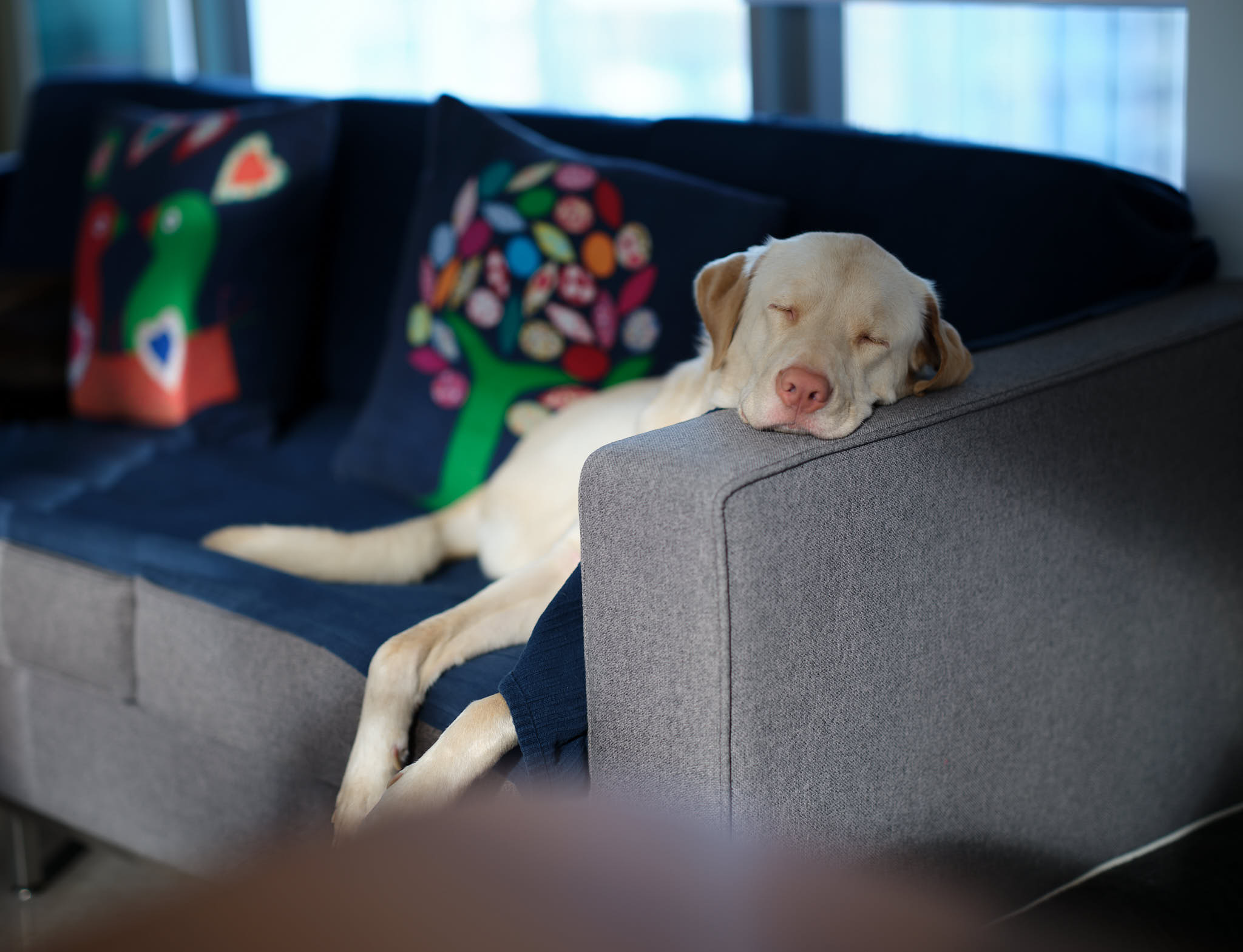
GFX100S 80mm ISO-100 1/20sec f/1.7 (Full-size 8MB JPEG) 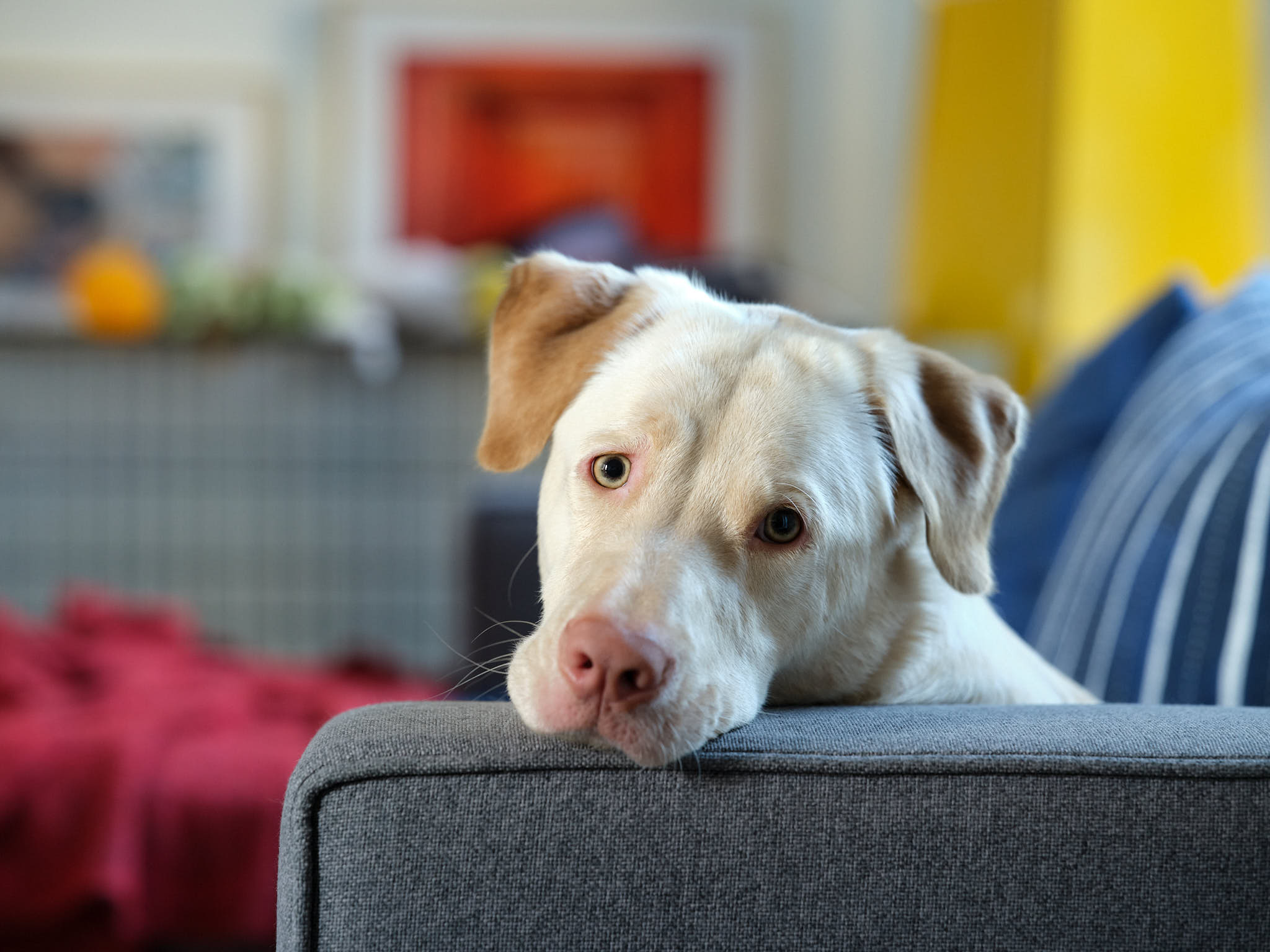
GFX100S 110mm ISO-1600 1/25sec f/4 (Full-size 14MB JPEG)
The 100S takes everything Fujifilm has learned from their GFX and X series and applied it to this camera. Its size is perfect, it has a familiar and responsive user interface, and with IBIS, the 100S has made it easier than ever to get a perfectly sharp image, even with a demanding 102MP sensor. This last point is very important because, before the GFX100, DMF cameras needed 1/(2 x focal length) or even 1/ (4 x focal length) shutter speeds to get sharp images.
I did an experiment with my 100S; I didn’t tell my novice camera friend what this camera is capable of, nor did I tell him the price. I just handed it to him and told him to go out and take some pictures. He dutifully used the camera, took some beautiful images and then handed the camera back to me after a few hours.
Without me saying or doing anything, he was able to use a Medium Format 102MP camera to take images on the street, in a restaurant, and around a bar.
Without me saying or doing anything, he was able to use a Medium Format 102MP camera to take images on the street, in a restaurant, and around a bar. When I downloaded the full size images and showed him what he had taken, he was floored at the image quality, and the ability to crop in again and again and again.
He was further astonished when I told him the price 🙂 At that point, he quickly handed the camera back, not wanting to potentially have an expensive accident. What I took away from that experiment was that anyone that can use a Fujifilm X-T4 can also use a 100S. That’s a huge testament to Fujifilm’s strategy to dominate the APSC and Medium Format markets by providing cameras that anyone can use.
Summary
If you can use a modern digital camera, you can use the 100S. It’s by far the most user friendly Medium Format camera you can buy. It’s actually easier to use than a Sony A7R4 and because of the IBIS, the issues that people had with getting sharp images with the 50R are completely alleviated. You no longer need to use 3x or 4x focal length shutter speeds to get a sharp image. Just point at your subject, focus, and for the most part, out comes an incredibly detailed 102MP image.
Build Quality
In general, Fujifilm cameras are well built, and the 100S is no exception. Holding the camera in hand gives it a robust and “built as one” feeling. However, when you start to touch the human interface elements over time, that’s when you come across some areas where compromises have been made, likely for weight, and perhaps also cost.
For example, there’s a confidence-sapping noise that gave me anxiety at first, but hasn’t caused any issue thus far. When pointing the camera upwards, the shutter makes a strange sound as if the motor or the shutter blades are not robust enough to handle the extra load from gravity. I was going to take the camera in for warranty, but I confirmed this is normal behaviour for the 100S.
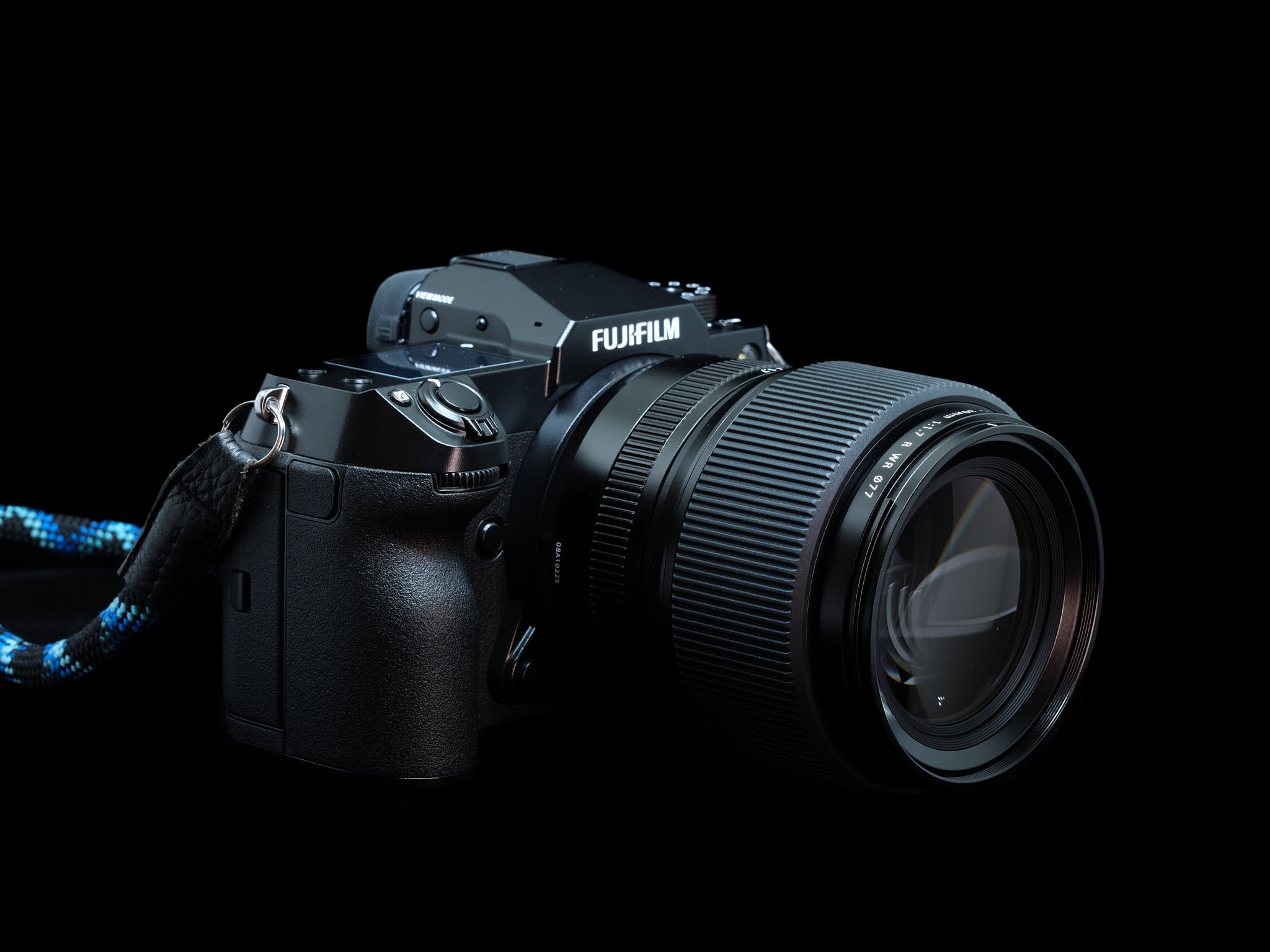
I continue to find some of the materials or mechanisms used on Fujifilm cameras to be a step below professional grade. The door for the in-camera charging for example, is flimsy and a bit clumsy to open and close. For a camera that doesn’t come with a charger, this door will be used every single time the camera is taken out. They should have put a proper hinged door flap instead of the awkward pressure fit door with rubber attachment.
On the other side of the camera, and on the bottom, for the SD card slots, and the battery slot, Fujifilm used hinged door flaps, but they feel incredibly cheap to open. They use a finger nail style opening mechanism rather than a latch. The whole experience just doesn’t feel that robust. I do however appreciate why they did this, likely for weight savings, and to bring the cost down to the point that many more people can enjoy this camera.
A nice metal or thicker plastic door would have added weigh and cost, and it’s clear the engineers tried to shave weight and cost everywhere on this camera. It’s a bit like driving a Lotus; its charm comes from being unusually light, but you trade that off by having an interior that moves around a bit when you put any pressure on it.
Summary
In summary, I’m being very picky here, and I think I’m also being unfair to compare a spectacular bargain DMF camera up against some of the (very expensive) greats like the Leica M10 (which I own and have used since it was launched), and Hasselblad XD1. I should note that I have not had any failures or issues so my criticism should be considered superficial.
Controls
I won’t cover the build quality of the controls here as my impressions haven’t changed since the first impressions review. I continue to be annoyed at some of the buttons and how difficult they are to find and/or press, with some being flush, others protruding, some having a good detent, and others feeling like mush. Fujifilm really needs to up their game on buttons consistency.
In regards to the actual control of the camera, I find it a mixed bag. I love my old Fujifilm cameras for having full manual control over the camera without having to turn it on. This is not possible on the 100S as you must operate the camera to change ISO and shutter speed; you can however control Aperture externally and view the settings on the top-plate display.
I love my old Fujifilm cameras for having full manual control over the camera without having to turn it on.
Another external control that I miss dearly is Exposure Compensation. The 100S implementation where you have to press a tiny button and then turn the rear command dial works sufficiently, but it’s not something that works very well; I’d much rather have an external dial. I do appreciate the tradeoff the engineers made in giving us a useful screen instead of a dial, but I wish there was a better implementation of this particular control.
With the 100S, Fujifilm changed its control layout and approach (again!) and took us more into the DSLR world with the PSAM dial. I thought I’d hate this approach as I was violently against it when I was using my previous Fujifilm cameras, but now that I’ve become accustomed to it, I see why it’s been the gold standard for so long with professionals.
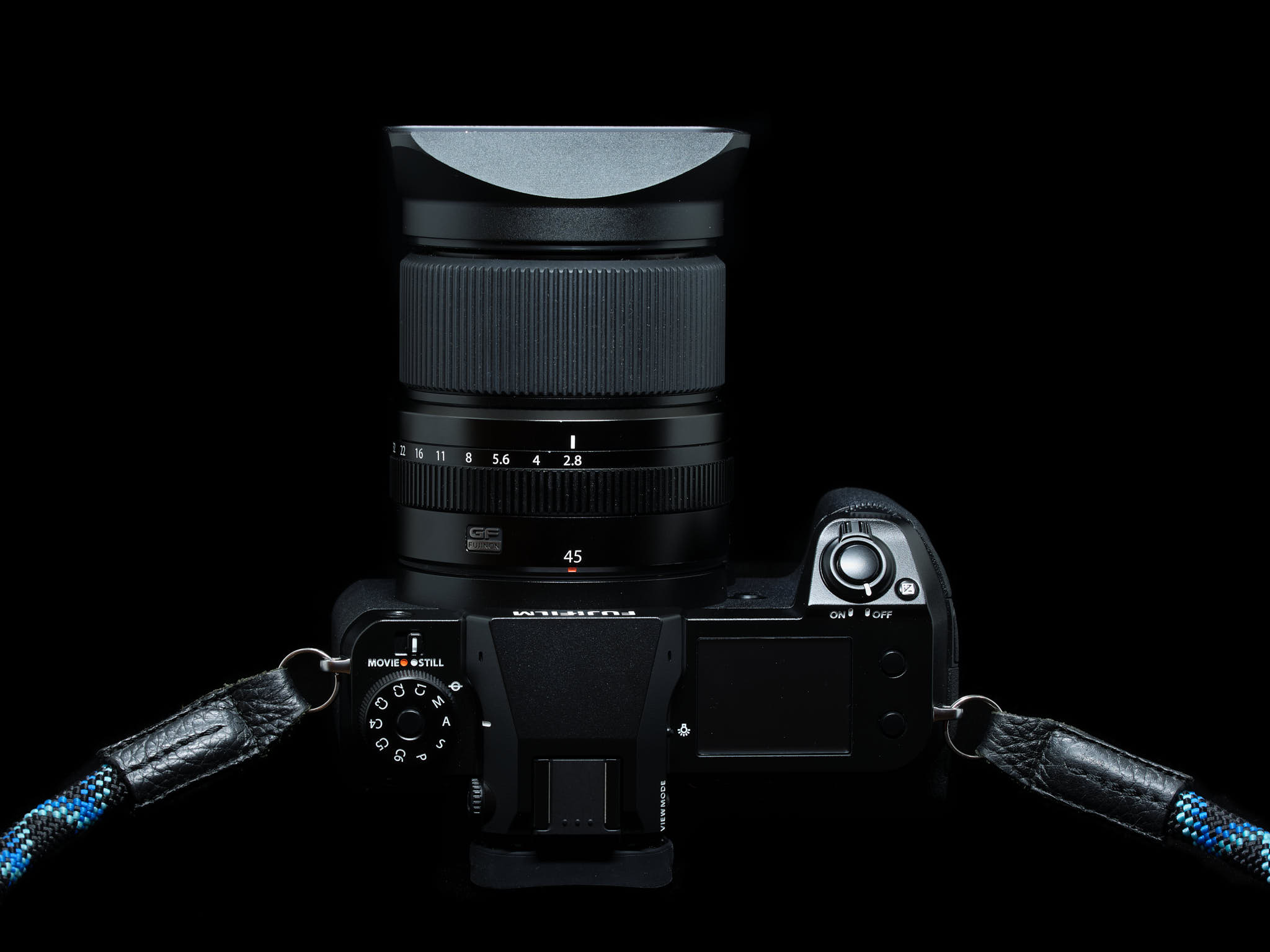
However, and this is a big however, Fujifilm went 80% of the way to this new (for Fujifilm) control mechanism, but didn’t go far enough. For example, one of the biggest benefits of the new control mechanism is having user custom presets (C1-C6). This enables the user to have typical photography scenes mapped into the settings (C1 for everyday shooting, C2 for landscape, C3 for portraits, C4 for pets, etc.).
Where they didn’t go far enough is ensuring that ALL logical settings that need to change do change when switching through the user presets. If I’m switching from C2 (landscapes) to C4 (pets), I’d want the focus mechanism to switch from “Single” to “Continuous”. However, this is not possible as Fujifilm left the AF mode as a manual switch on the body.
It should be a button so that it can be overridden by the camera when required. It’s very frustrating to have to remember to change the focus setting when changing user presets. Another strange blip is that there isn’t anywhere on the external screen to see the label attached to each preset. The only place I’ve found it is in the Q menu.
My final thought on the 100S’ controls is that Fujifilm may have made an “own goal” to some extent, because by transitioning away from the differentiating feature of dials and knobs that made Fujifilm famous, it’s opened eyes to how easy it can be to transition to a traditional DSLR style control mechanism; this means that any of us die-hard Fujifilm fans can easily adapt to a Canon R5, Nikon Z7II or Sony A7R4. That’s something I didn’t expect to be the case prior to actually making the transition.
Summary
In summary, I tolerate the new controls mechanism because of how great the rest of the camera is. I would have preferred if Fujifilm went all way with the DSLR style controls and made everything (with the exception of Aperture) electronically controlled. Then the custom presets would have been an excellent automation feature.
Never miss a post again, please subscribe to our no-spam mailing list
Autofocus
For autofocus (AF) performance, I think we need to split it into two categories, one for when we want the camera to focus one time prior to the exposure, what Fujifilm calls Single-AF, and for when we want the camera to be continuously looking for perfect focus, right up to when the shutter opens, what Fujifilm intuitively calls Continuous-AF.

Single-AF Performance
The 100S has excellent Single-AF performance with it being a very rare occasion where the subject is not in focus. This is especially true when using the smallest AF box size, where you can really pin-point where you want focus to be. With the 50R, I often took 2-3 images of the same subject to ensure that at least one would be perfectly in focus. With the 100S, I feel confident to take just one and know that it will be in focus. This excellent performance comes regardless of the lens used.
Continuous-AF Performance
Looking at Continuous-AF in isolation of the camera brand, one could argue that the 100S is a significant step down from its Full Frame competition, especially with lenses that don’t have Linear Motors (“LM” designation). However, when taking into consideration my experience with all Fujifilm cameras to date, I think it’s fair to argue that the 100S is hindered more by Fujifilm’s autofocus algorithms rather than anything intrinsic to the 100S.
My Fujifilm X-T4 and X100V also have Continuous-AF capabilities that are a step below the competition, whether that competition be APSC or Full Frame. The two modes that I do feel have decent performance are the Eye-AF and Subject Tracking modes, but they both also have shortcomings that their market competition have managed to overcome.
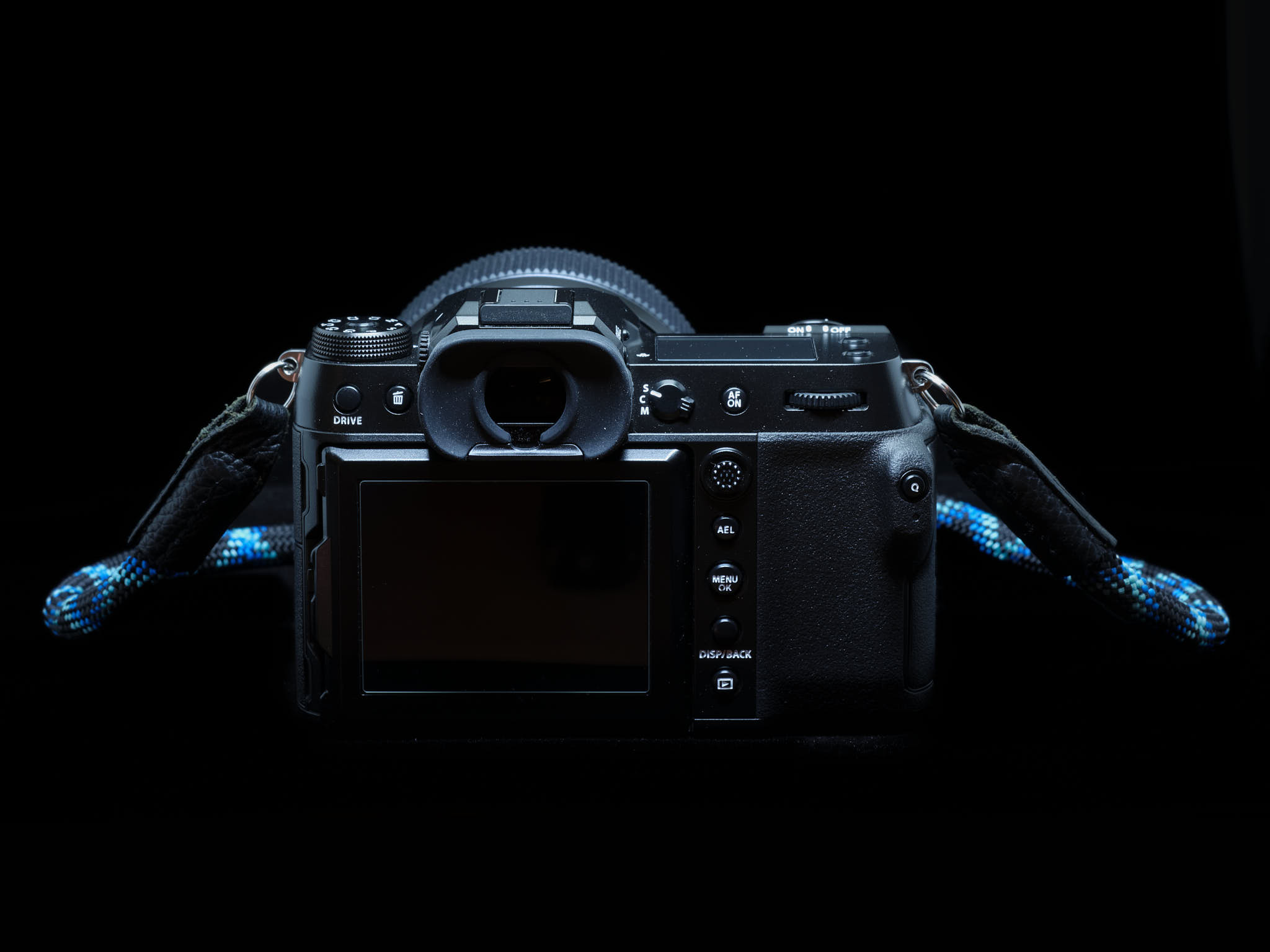
The Eye-AF is inconsistent in Continuous-AF mode, which is where you most need this mode given that humans don’t tend to sit still. Ironically, Eye-AF works better in Single-AF mode, where it’s possible to get tack sharp eyeballs as long as the subject doesn’t move. The Subject Tracking mode can have good performance, however the AF box size makes it difficult to target the exact area of the subject you want in focus, especially a problem with shallow depth of field lenses like the GF110, GF80, and GF250.
In Continuous-AF, the choice of lens also has a very big impact on the relative level of success obtainable. The lenses with Linear Motors (“LM” designation) are much better at being able to respond to the camera’s request to move back and forth to find focus. However, the Fujifilm algorithms just aren’t up to par, and even with phase detect autofocus pixels on the 100S sensor, the camera still sometimes pulses the AF back and forth in a way that Sony and Canon cameras just don’t do.
Summary
The 100S’ AF performance is excellent in Single-AF, but Continuous-AF is hindered by a combination of Fujifilm’s algorithms, lens motors, and the sheer number and weight of optical elements that need to be moved. To improve your odds, use a lens with an “LM” designation, set the camera to take multiple images (I prefer to use the Continuous Low setting which gives the camera some time to acquire focus), set AF priority to “Focus”, use subject tracking with “Ignore Objects” set to 5, and, where appropriate, use Eye-AF.
I really hope that Fujifilm has a team of engineers working hard on improving their AF software. All of their cameras were behind the competition when they launched, and are now falling further and further behind with every new camera launch from Canon, Sony and Nikon. Perhaps Fujifilm only leads Panasonic and Leica now.
I really hope Fujifilm has a team of engineers working hard on improving their AF software. All of their cameras are behind the competition.
A reader would be fair in criticizing my comparison above because neither Sony, nor Canon, offer Medium Format cameras. I think that criticism would be fair, but when I see most people comparing the 100S to other cameras for their buying decision, it’s rarely against another Medium Format camera, but rather comparing to the very best Full Frame cameras. Please let me know what you think; am I being unfair in this comparison?
Video
I bought an X-T4 for its 4k video performance, so I didn’t really consider the video capabilities of the 100S when I bought it. However, I’ve been very pleasantly surprised at its capabilities, especially with the updates Fujifilm has provided in supporting Blackmagic Raw, ProRes Raw and the general attention Fujifilm is putting into making the 100S a formidable video camera.
I’ve found the video footage to be so pleasing from the 100S that my X-T4 has become somewhat redundant. I now only use the X-T4 for when I need even faster AF performance or really long reach. I recently took some adhoc footage on the 100S from a vacation using the Eterna profile, and it turned out so cinematic that I’m surprised it came from my hands! When paired with the GF80 at F1.7, the video really takes on a film-like appearance. It’s gorgeous.
I intend to spend more time exploring this new found capability in my 100S and hope to write up a proper post on this subject once I have more video experience under my belt.
Summary
The 100S is a far more capable video camera than I had expected. It produces gorgeous video footage with a look that reminds me of something that you’d see in an IMAX movie. Fujifim is taking video seriously and has provided some compelling new features for the 100S. Pair the 100S with some interesting adapted lenses and you can be producing some very unique and beautiful footage without much effort.
Image Quality
For people who’ve arrived at this website for the first time via this post may come to the conclusion that I’m not happy with my 100S, but that would be the furthest thing from the truth. For all the critical points I’ve raised above, they get washed away the moment I look at the mind-boggling image quality and colours this camera produces.
To really appreciate what this camera can do, you need to see the images on a very large and very high resolution screen like Apple’s 32” 6k screen, or better yet, printed on art paper behind museum grade acrylic. For prints that people can come very close to, I like to see >200ppi and with the 100S, you can achieve that with a 148cm x 111cm (58” x 44”) size print!
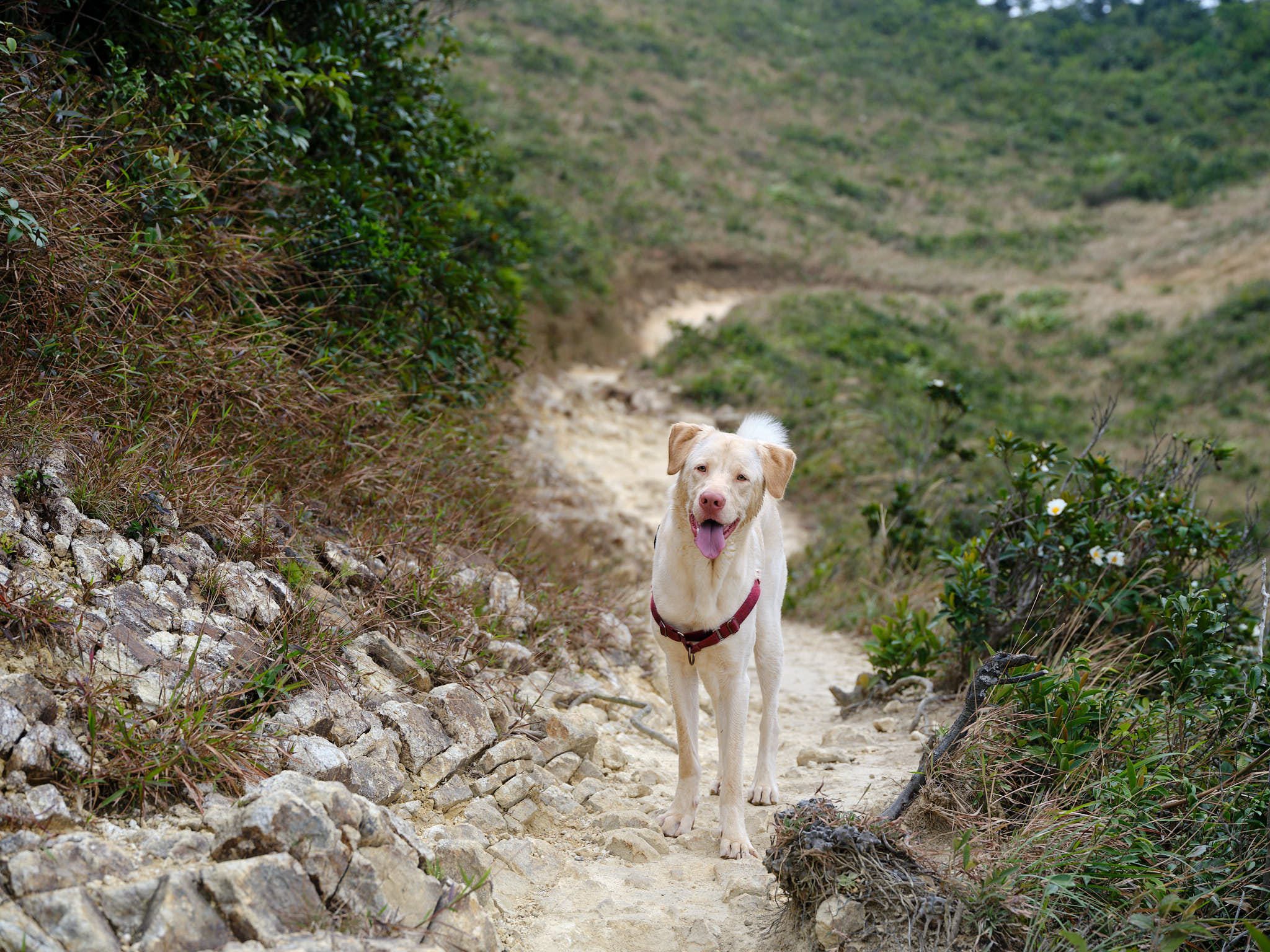
In comparison to the 50R, what I’ve noticed over time is that the images look smoother on the 100S, and sometimes even less “sharp”. It took some to figure out why this is, but with the help of Jim Kasson’s excellent blog (https://blog.kasson.com/category/gfx-100s/), I’ve concluded that this is a result of much less aliasing and moire. Once you get used to the 100S’ images, nothing can compare.
For all the critical points I’ve raised above, they get washed away the moment I look at the mind-boggling image quality and colours this camera produces.
Another area that the 100S took a large step forward compared to the 50R is in high ISO performance. With the 50R, anything above 6400 ISO looked pretty bad, and I would even argue that anything above 1600 ISO in truly dark conditions was already marginal. With the 100S, 6400 and even 12800 ISO are perfectly usable. If the Acros film simulation is used, you can go even higher and use the grain to your advantage.

At a pixel level, the 100S shares a sensor architecture with the Sony A7R4 and the Fujifilm X-T4, so you can expect that when zoomed in at 100%, you should see similar sharpness. However, this is not often the case, and the reason is because of the high standard of Fujifilm GF lenses. To match the pixel level sharpness of the 100S and GF lenses combined, the Sony A7R4 needs to be outfitted with the very best G-Master equivalent.
Regardless, a pixel level comparison doesn’t make much sense, since you have much more image available with the larger sensor on the 100S and the 4:3 ratio. That leads to another aspect that I’ve come to love about Medium Format cameras, the 4:3 aspect ratio. In a social media world, having a taller image really helps when you need to produce images for a variety of formats including mobile phones and tablets.
Summary
The image quality, combined with its size and usability, are what sets the 100S apart from all other cameras. Any negatives listed above quickly become forgotten the moment an image is reviewed on a high resolution screen or when printed large.
Conclusion
For avid readers of this blog, you’ll know that I was willing to put up with the quirks of the 50R in exchange for its excellent image quality. The 100S raises the bar several notches, while also removing a number of the 50R’s annoyances. It goes without saying that I’m absolutely in love with the 100S.
I’ve been critical in this review in some of my comments, but I feel that if you’re going to spend US$5,999 on a camera, you should know the good and the bad. The vast majority of people buying this camera will be focused on its image quality, and in that area, it delivers in spades.
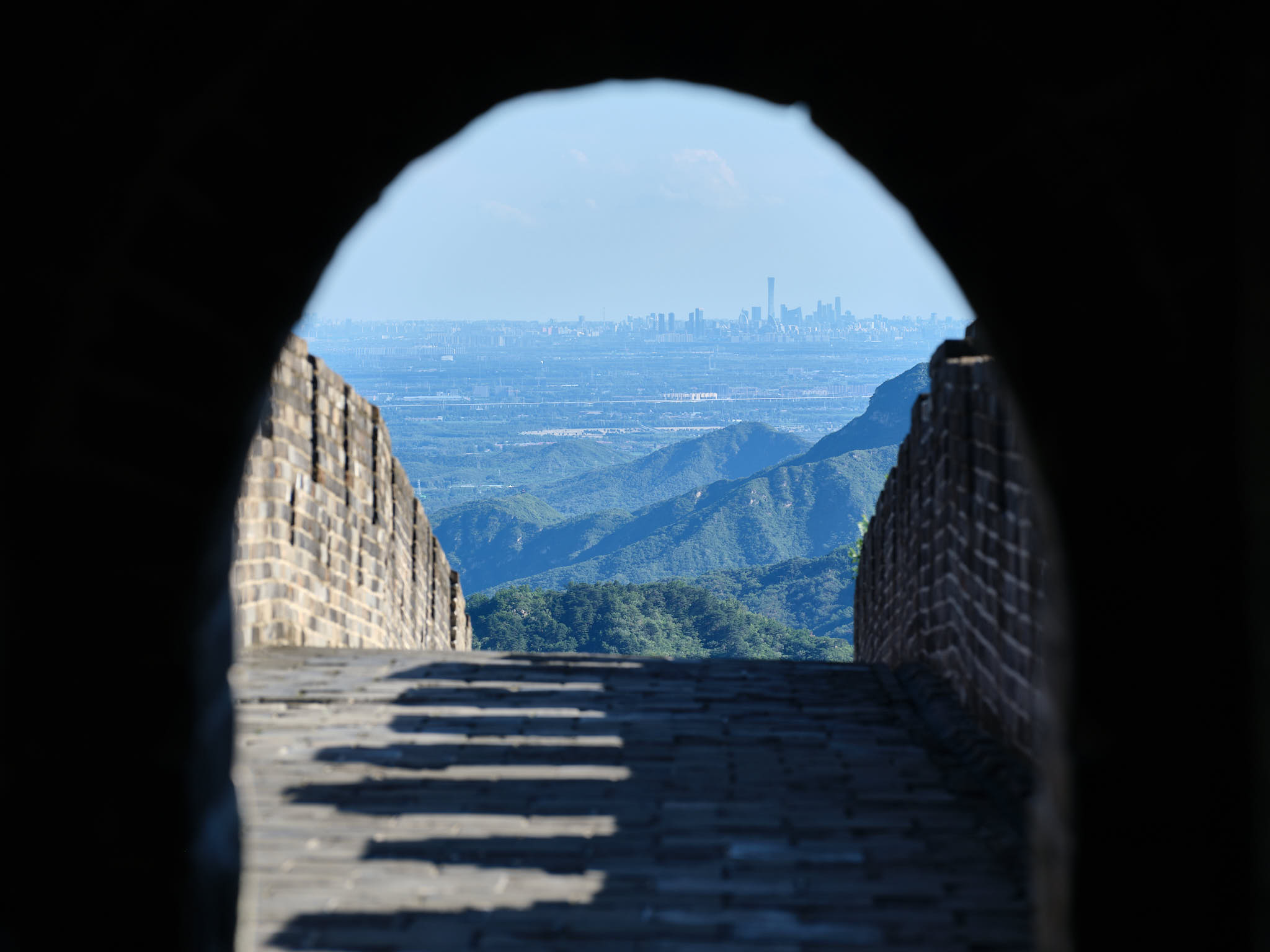
For the areas that lag a bit, I think Fujifilm can improve and fix like the AF performance for example. In other areas, I don’t think they’ll make any meaningful improvements, such as the plastic parts on the camera, because they appear to be reasonable tradeoffs to fit within weight and cost constraints.
There’s no other camera I’d like to own right now, and with Fujifilm pumping out amazing lens after amazing lens, I can’t wait to see what the future holds for this exciting and evolving GFX platform.
If wait times are anything to go by, it appears that many people have recently gotten onto the Medium Format train, which can only mean there’s more incentive for Fujifilm to further develop these cameras and the lens ecosystem. The future looks very bright for the GFX.
In summary, there’s no other camera I’d like to own right now, and with Fujifilm pumping out amazing lens after amazing lens, I can’t wait to see what the future holds for this exciting and evolving GFX platform.
I hope you’ve found this review helpful. If you have any questions, please let me know in the comments below; I’ll do my best to respond quickly. Please note that the images presented in this review were selected to showcase the ability of this camera to take sharp images while being hand-held. They were not chosen for their artistic qualities. For artistic images, I recommend visiting Jonas Rask’s and Wanderglass’ websites.
Discover more from fcracer - Travel & Photography
Subscribe to get the latest posts sent to your email.
Your review is top-notch, thank you. Question: what’s more fun to shoot as an all-rounder, the GFX 100s or your Leica M10? I am considering both, but since I own a X-H2 and the new Sony A7CR, I think I have great AF covered, so wondering what would advance my photography and be the most fun to shoot (street, landscape, architectural). Any thoughts?
Hi John. For fun, it has to be the Leica M. The M10-R is probably the best value for the money at this time. High resolution and a great sensor with plenty of highlight recovery. The M11 is having a rocky mid-life crisis with a recently released firmware that causes corrupt images and random freezes. I’d stay away from any M11 unless it’s on old firmware (1.6.x was solid for me) or Leica finds a fix to the issues.
Excellent review! Digging my 100S.
What settings are you using to get such a small file size on your JPGs?
Thanks,
Mike
Hi Mike, I’m using Capture One Pro and export a custom size for this blog. I set the max size for one dimension at 40% quality (compression) and let the app do the rest.
Ah, yeah I’ve been exporting at 80% in Lightroom and it does about 15-20 megs for 100MP JPG, not too bad.
100s is an excellent camera for the quality-price. But obviously not the best in terms of picture quality. The color skew is too obvious and cannot be completely eliminated in the PP. Hassel x2d is much better in color. Therefore, I would not praise it like that, it is a good camera, but for professional landscape photography, I would not buy it.
Jim has written a whole series about the colour accuracy between the 100S and Hasselblad modern cameras. You can find it here.
hi, when you use raw with the Fuji GFX 100S, do you use uncompressed or lossless? 14 or 16 bit? Thank you
Hi there. I use 14-bit lossless. Jim, at his amazing blog, has tested the differences between 14-bit and 16-bit and found minimal difference. You can see the post here. In my own testing, for photography purposes, I see no tangible difference. With no gains, the downside of the slower camera speed is not a worthwhile tradeoff.
I use lossless because I don’t see any performance but on my M1 MacBook Air. Actually, it processes 100S images faster than the x-trans X-T4 images. The only downside to lossless compression is that some operating systems can’t work with them (MacOS won’t show previews and IOS Photos also can’t work with them). The upside of much lower file size is a worthwhile tradeoff in my opinion.
Hope the above helps. Let me know if you have any other questions.
So that’s interesting news for sure! I’m looking forward to discover your findings. Cheers!
I just had a look at the C1 live blog. Well, the least I can say is that the maxed out MBP needs time to stitch a Pano. Maybe this should be the way to go against what I thought…
Hi Oliver. You inspired me to do some testing on the panorama feature in C1 22 and I’ll be putting a post up later today with the results. To give away the plot, the M1 MacBook Air is more than sufficient, and I don’t think you’ll see much benefit from the Pro or Max because C1 doesn’t appear to use the GPU for the panorama stitching. You’d only see an improvement proportional to the additional CPU cores that you buy with the Pro or Max. More to come when the post is up…
That’s what I thought and hoped to hear! My 2017 iMac manages panos and HDR not too badly under C1. Normally the Air is benchmarking better than the desktop and as I won’t output 1k images a time and travelling, I think this should be the way to go. Art from YT channel Artisright believes that the 14” should be the way to go for Pano work. Thank you for your reply! Nice site by the way with cool topics and interesting content!
Hello, I stumbled upon this post looking for feedback on the GFX100S I own and using its files on the MBA M1. I am torn between the MBA and the new PRO M1 14″ as I project to travel for the next 18 months or more. I don’t do much video and am actually using a 2017 iMac 27 5k.
Would you mind sharing some thoughts or recommendations? Besides being lighter than the new 14″ Pro, the MBA M1 is also half the price, so why bother risking the money (in case of theft) and hauling the GFX gear? THX!!!
Hi Oliver. Thanks for writing in (I’m glad to see the commenting system is still working after all the website changes I’ve recently made!). I regularly use my M1 MacBook Air 16GB 8-core GPU computer with Capture One and it gobbles up the GFX100S files like nothing. I find my M1 MacBook Air faster than my 2019 iMac 27″ i9 with 48GB of RAM in regular photo editing! The only time the iMac i9 gets ahead is in exporting images or GPU intensive routines like pano-stitching or HDR.
In summary, if you’re not doing any hardcore 6k+ video, pano-stitching, HDR or exporting thousands of images, I think the M1 MacBook Air is perfectly suitable for travel photo editing. As you noted, it’s quite a bit lighter in weight, its shape is easier to manage in a backpack, and it also has better battery life than the Pro models. For me, the weight is key as I’m constantly trying to shave every gram I can from my backpack. If you decide to get the MacBook Air M1, let me know how it goes. You should know that there are http://www.macrumors.com that an updated MacBook Air is on its way with a new form factor and screen size.
Thanks Taher. It’s an amazing camera! If Fujifilm can do the same magic that Sony, Canon and now Nikon have done with autofocus, this series of camera will be hard to beat!
Thanks 🙏 a lot for this awesome article. I just got mine two months ago, like you said right now I don’t want to think about another brand, this cameras is beast…